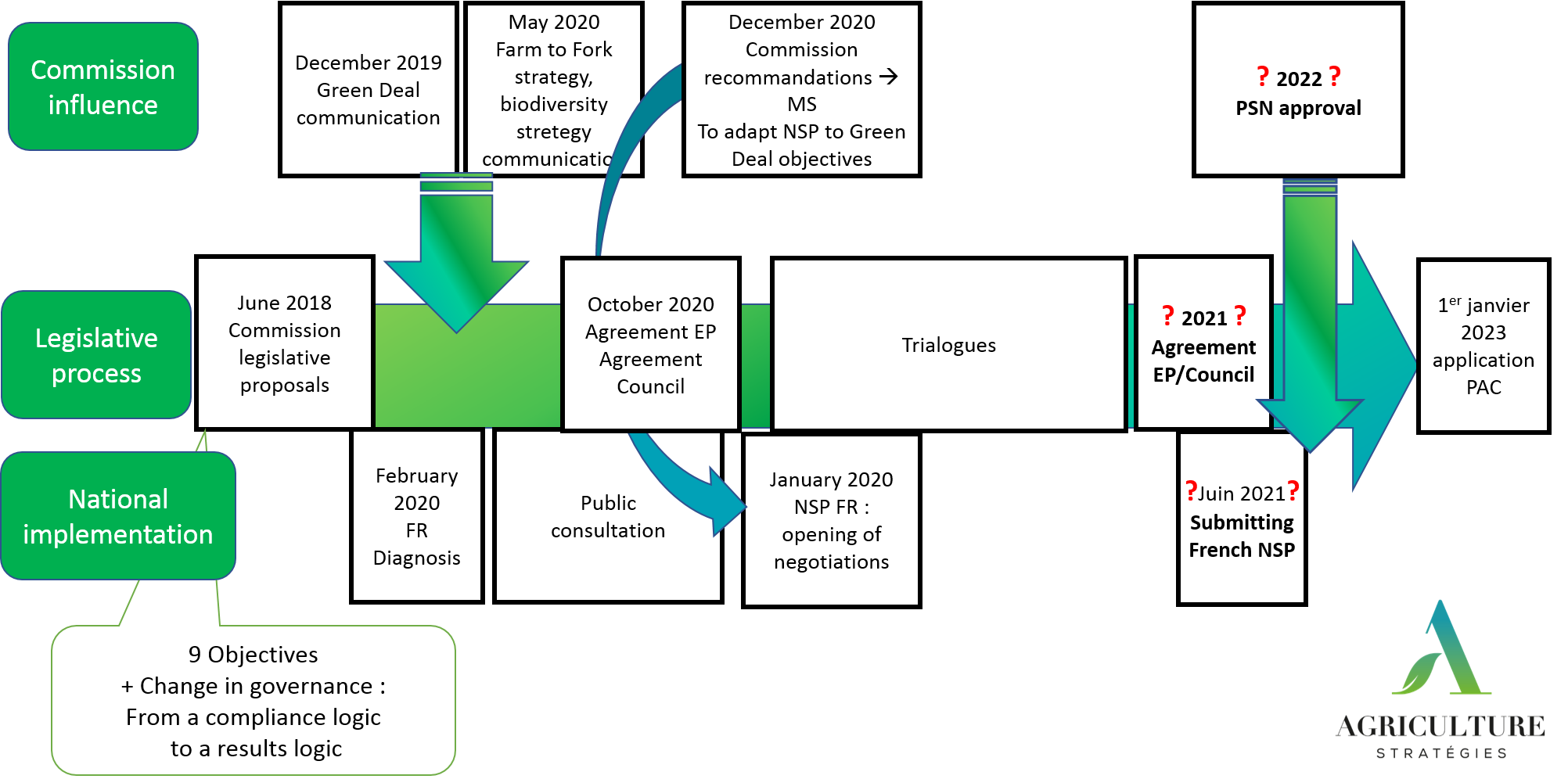
Download the PDF
The draft European regulations, proposed by the Commission in June 2018, introduce a major innovation: the development by each Member State of a national strategic plan (NSP) defining the interventions and the ways of implementing the CAP at the national level, covering the two pillars of the CAP. Often seen as a new step towards a form of renationalization of the CAP, this novelty indeed complements the flexibility already offered by previous reforms. But it also brings to the Commission to get a new degree of influence over the implementation of the CAP, regardless of the trialogues. Is this new layer of the CAP, which also requires considering the public opinion on an already complex subject, and which further lengthens the legislative process, does it finally have a real interest?
National strategic plans, a new step in subsidiarity
Since the introduction of decoupling in 2003 and the enlargement of the EU in 2004, the CAP has get used to subsidiarity. This expression leaves plenty of room for manoeuvre to Member States: the level of decoupling, its date of application, the choice of GAEC (good agro-environmental conditions), the percentage of envelope to be used for certain payments (young farmers, redistributive payment, or coupled payments), the rate of payment convergence, the possibility of capping or not the subsidies per farm, or the level of aid allocated to each of the two pillars, flexibility, co-financing, etc. The list becomes endless. Each provision is now subject to compromise and adaptation in order to satisfy 27 Member States with diverse agricultural backgrounds within a constrained negotiation schedule.
The negotiations take more time, the administrative machinery is struggling to keep up and the implementation of the CAP takes years of delay in each cycle: the 2013 CAP is set up in 2015, and the 2021 CAP will start in 2023. Under such circumstances, impossible to draw lessons from the previous period to consider the next; the post-2020 CAP legislative proposal arrived on the table in 2018, i.e. after less than 3 years of the previous CAP, and was therefore conceptualized while the 2014-2020 CAP had barely been validated.
The CAP prides itself to engage farmers in major environmental transitions which require long-term changes in farming systems, but cannot offer stable conditions in terms of economic and political incentives. While the income depends on aid at 93% for the dairy cattle sector, 152% for the sheep / goat sector, and 195% for the suckler cattle sector (for France[1]), the conditions of allocation and the amount of subsidies are being amended every 5 years. When this uncertainty is added to those of market prices and climatic hazards, how can farmer consider investments that pay off over 15 years?
The accumulation of these uncertainties (regulatory, climatic, economic) is made even more unbearable as crisis management does not seem to be a political priority. While the management of climatic hazards is relegated to Member States, and will depend on the NSP and the budgetary envelope that will be devoted to it ( climate insurance is the subject of many criticisms due to its cost and the difficulty to trigger it), the management of market crises remains the responsibility of the Commission (excluding NSP). While the successive reforms of the CAP have led to complete deregulation of the sector through the abandonment of quotas and the introduction of decoupled payments, the proposals for new management of the crisis fund and the regulation of supply voted by Parliament, whose ambition remains moderate, still find too little echo from the Council. The reform ignores the current context of agricultural markets marked by volatility, and still does not consider the consequences of these price fluctuations on the productive strategy of farms. However, securing income and investments are necessary to ensure the agroecological transition and consolidate a diversified agriculture that creates jobs and wealth. A farmer who commits to a transition of his production system needs public support at several levels: training, individual and collective advice, economic and financial support, risk management. This concerns interventions in two main levels: crisis management (market, climatic or health) and support for the tangible and intangible investments necessary for the transition.
Delegate responsibility for linking the CAP to the Green Deal to the NSPs
In an attempt to give a course to the CAP, the Commission was given broad guidelines through 9 major objectives detailed in the publication of the legislative proposals on 1st June 2018. Meanwhile, the newly elected Commission in 2019 detailed his environmental ambitions through the Green Deal, which specifies the role attributed to agriculture within the Farm to Fork strategy, and is articulated on the agricultural subject with other strategies, such as that on biodiversity.
The question of the ability of the future CAP to meet the environmental ambitions of the Green Deal and the quantified objectives announced by the Farm to Fork strategy quickly arose. While this Green Deal could have been seen as an opportunity to reorient the CAP and take back the text from the ground, the Commission, for its part, considered that the 2018 proposals were able to respond to the issues raised, on condition, however, that the NSP are enough ambitious to achieve these objectives[2]. The current trialogues therefore now include the objectives of the Green Deal in the compromises to be found, which must already reconcile the views of the Council and those of the European Parliament [3]. Asked by Parliament on this issue, French researchers (INRAE) were quite sceptical[4]. For them, it will not be possible to achieve the objectives of the Green Deal without significantly modifying the initial legislative proposal, through a reinforced conditionality, an increased redirection of payments towards environmental actions, a border protection and a coordination with a true food policy. For them, the way in which the NHPs are designed will indeed remain decisive.
The national implementation through the NHP seems to be both an attempt to give an opportunity to Member States to appropriate these new CAP objectives, and to delegate to them the responsibility for achieving the objectives of the Green Deal. The choice of the level of result objectives is in fact up to the Member States, even though the proposed definition of indicators or of the calculation method remains unclear. Another point that contributes to discredit this new form of governance: all these objectives of the Green Deal or the Farm to Fork strategy remain legally non-binding, because they are not included in the legislative proposals. In other words, the Member State will not be sanctioned if it does not achieve these objectives.
Thank goodness for that, because the NSP must enable to achieve multiple objectives, to the point that this exercise leaves us dubious. The proposed regulation provides that the NSP responds to 3 general objectives, by establishing a “national strategy structured around nine specific objectives and a transversal objective”. The Farm to Fork strategy adds quantified objectives (50% reduction in the use of pesticides, antibiotics, loss of nutrients, 25% organic surfaces). The CAP is now supposed to serve increasingly diversified or even conflicting objectives, such as ensuring a fair income for farmers and increasing competitiveness, but also protecting the environment, acting against climate change, while meeting societal expectations [5].
It is up to each member state to find how to achieve this, by developing results objectives to achieve European objectives. In short, we point the finger at the destination, it’s up to you to find the distance you are able to cover and the way to follow.
In order to encourage collective effort all the same and to prevent the less athletic Member States from being satisfied with a shorter journey with shortcuts, it is planned that the NHPs of each Member State must be approved by the European Commission. In view of the importance of the NHPs in the application of this CAP, this point deserves to be underlined, because it illustrates the will of the Commission to influence the negotiations, and this even beyond the trialogues, whereas it is not co-legislator. Nevertheless, in view of the timetable (the NHPs will have to be submitted this year and approved by 2022 at the latest), we can consider that it will be complicated for the Commission to refuse a plan because of insufficiently ambitious objectives. In a desperate attempt to impose itself, the Commission formulated last December “recommendations” which, it insisted, should be taken into account by Member States when drawing up their NSP. This unilateral stance on behalf of the Commission came unexpectedly to be added to the already multiple expectations vis-à-vis this future CAP. But as the very good analysis of Tomàs Garcia Ascarate says it, these recommendations come too late in the process to be really considered, and are therefore relatively useful. As proof, they remain very general and are not subject to any quantified criteria.

Figure 1 : the stages of the new reform and its French version under the influence of the Commission, source Agriculture Strategies
The NSP in charge of reconciling agricultural and civil expectations
The CAP, which was already unable to gain unanimity among the farmers, regularly opposing breeders and grain producers on the distribution of the envelopes, must now also achieve a new performance: satisfying the rest of civil society (which may not be an easy task). The Member State had to prepare a diagnosis of its own agriculture before drafting its NSP and the consequences of the implementation of previous CAPs. This diagnosis should also serve to carry out an inventory of the sector’s needs but also to take stock of consumer expectations. Following the release of its diagnosis in February 2020, France has implemented the second mandatory step, namely the public consultation on the development of the future NSP, based on this diagnosis. Due to the circumstances, the consultation was done in a dematerialized way on the ImPactons platform and by means of public meetings. The citizen’s point of view is thus the subject of particular attention, for the first time since the creation of the CAP, since this consultation was an unprecedented obligation of the legislative process .
On January 7, the ImPactons platform returned its copy, including 1083 proposals. The President of the debate, Chantal Jouanno, noted the reluctance of the authorities and professionals to invite the public to take up the debate, indicating that it was particularly marked by “mistrust”. How to blame farmers for fearing the effects of public opinion towards the distribution of subsidies which are vital for the survival of their businesses? And for good reason. Unsurprisingly, citizens’ expectations mainly focus on environmental protection, and the government will have to provide a response by April 7. The risk lies for French agriculture to continue to find itself trapped between the highest environmental standards in the world, frequent over-transpositions, and an ever-greater connection with international dumping prices. Environmental NGOs must become aware of this situation and help agriculture get out of this impasse by advocating that European standards also apply to imports, at the risk if not that their requirements will worsen the situation. Invited along with the agricultural unions, hope that these NGOs will be able to use the negotiations on the French version of the CAP through the PSN to fully grasp this issue.
While the trilogues are still underway to reach agreement between the European Parliament and the Council of Ministers on basic subjects such as the envelope dedicated to eco-regimes, capping payments, the amount of decoupled payments, or the rules of redistributive payment, Member States must still make progress on the design of their NHPs. Lack of visibility and perspective, contradictory objectives, pressures from the various bodies, unions, civil society … The clear definition of results objectives, however promoted in the initial Commission proposal, is a real challenge in a such context.
Alessandra Kirsch, Director of studies of Agriculture Stratégies
February 2021
[1] https://impactons.debatpublic.fr/wp-content/uploads/diagnostic-v2_psn-pac_022020c_compressed.pdf
[2] https://ec.europa.eu/info/sites/info/files/food-farming-fisheries/sustainability_and_natural_resources/documents/analysis-of-links-between-cap-and-green-deal_en.pdf
[3] https://www.euractiv.com/section/agriculture-food/news/agrifood-brief-a-5-column-clover-for-luck-with-cap/?utm_term=Autofeed&utm_medium=social&utm_source=Twitter#Echobox=1611335697
[4] https://www.europarl.europa.eu/thinktank/fr/document.html?reference=IPOL_STU%282020%29629214
[5] https://agriculture.gouv.fr/pac-post-2020-quest-ce-que-le-plan-strategique-national





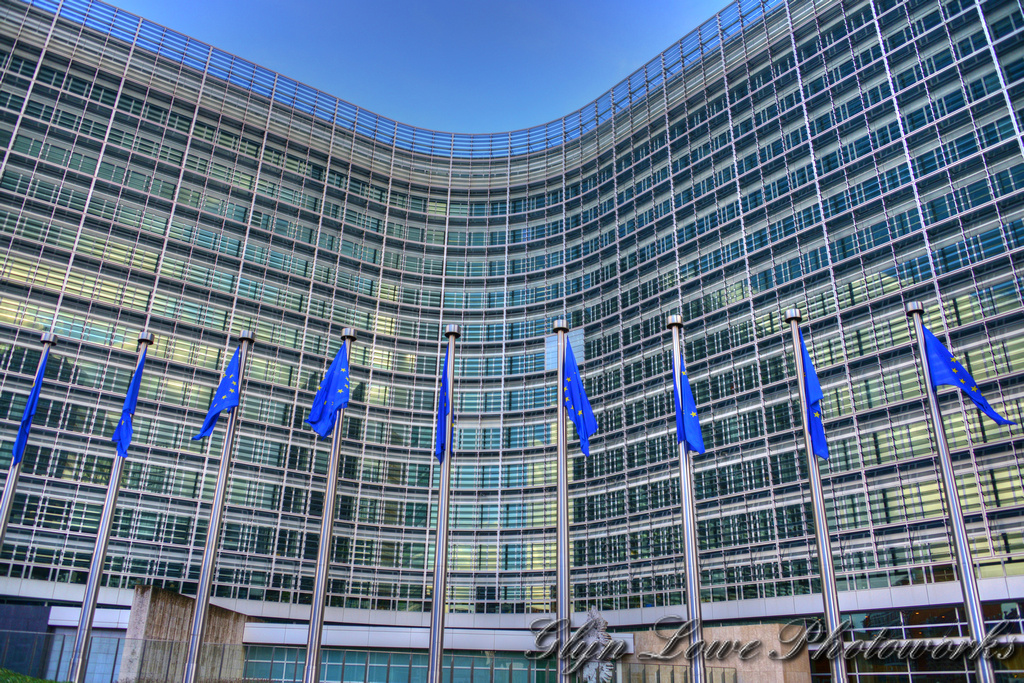


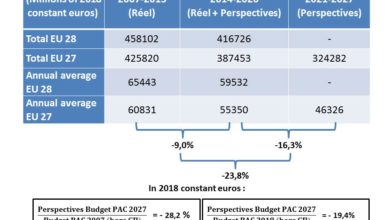
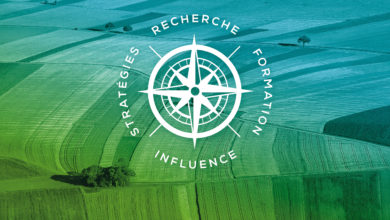

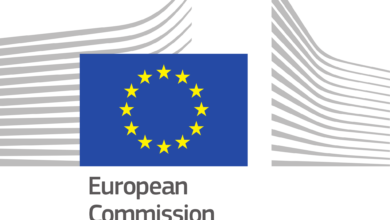
The agricultural industry has not always been enthusiastic about the implementation of advances in technology and technology, and this traditional way of thinking is beginning to change. I am very impressed with the mission of the company Slopehelper “No more hands in agriculture”. I really think this is where agriculture should aim